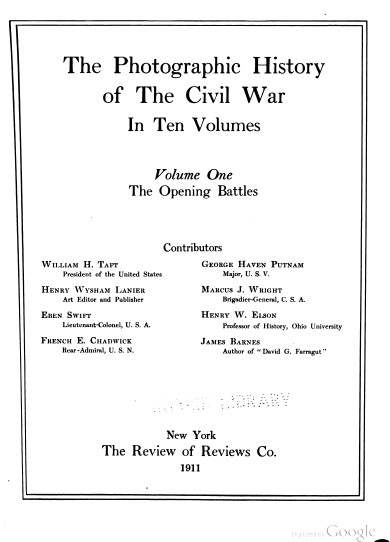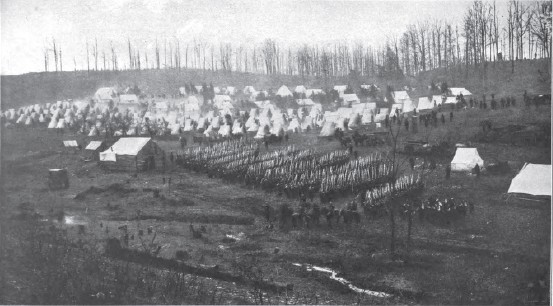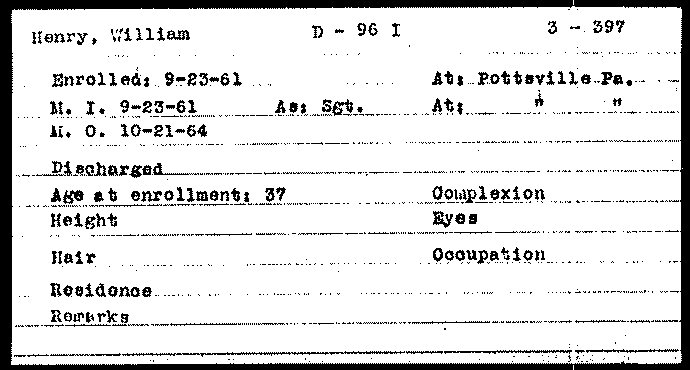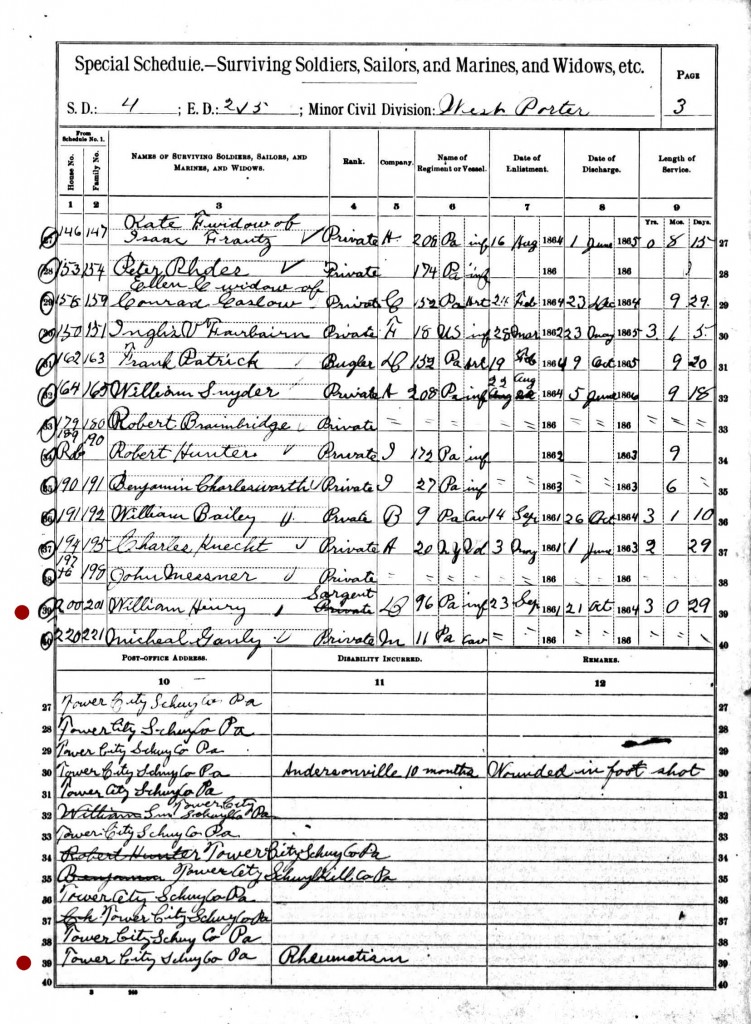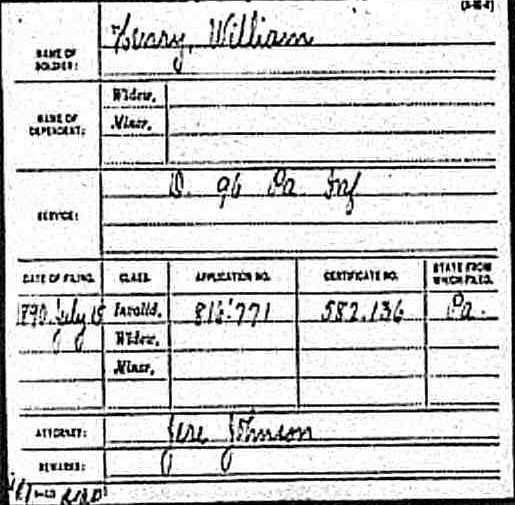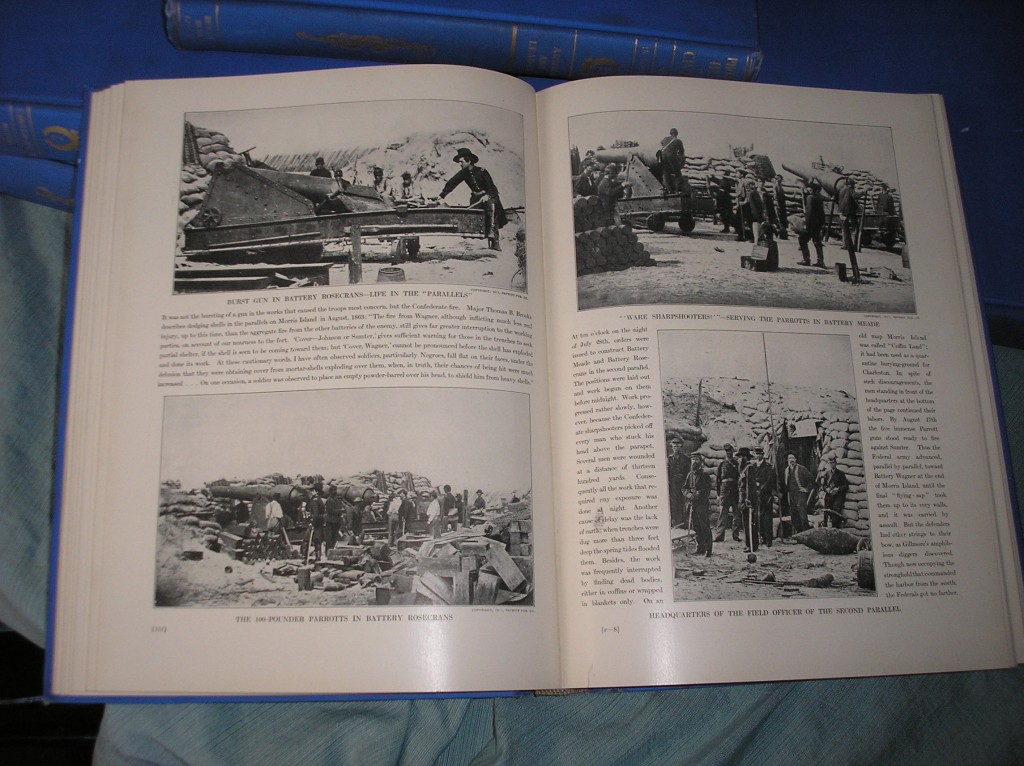Posted By Norman Gasbarro on January 29, 2011
Nearly all of the men who served in the Civil War from the Lykens Valley area served in military units as soldiers. But a few did serve as sailors or marines. Finding information on the sailors and marines is much more difficult than finding information on soldiers who served in Pennsylvania Civil War regiments, because they are not included in the previously discussed lists – Steve Maczuga’s Pennsylvania Civil War Project or the Civil War Veterans’ Cards of the Pennsylvania Archives.
Further research is needed to get an accurate list of all from the Lykens Valley area who served at sea – as sailors, marines, merchant seamen, blockaders, or in the revenue service in the Civil War. Occasional references to naval service are given for the following men:
John Carson (1819-1880). John Carson was born in 1819 at “Carson Hall”, Dauphin County, Pennsylvania, the son of Charles S. Carson (1791-1871) and Mary Ann Campbell (1796-1871), and he died 26 Jan 1880. He is buried in Oswego , New York. He married (probably later in life) to Susan Rinney of New London, Connecticut. He worked as a clerk in the office of the Secretary of the Commonwealth, then as a clerk in Harrisburg Post Office. He was appointed Commissioner under the Secretary of the Treasury Department in 1845, and received the rank of 3rd Lieutenant in the U.S. Revenue Service. His sea duties took him to Erie, Charleston South Carolina, and at his request to the Gulf of Mexico because he “wanted more action.” Other service was in the Oregon Territory. In 1861, John received the rank of captain and in May 1864 assumed command of the revenue cutter James Campbell. His roster relates his activities: in September 1864 he requested leave to visit his home in Pennsylvania – it had been three years since he had a leave. In August 1866 he explained by letter why his cutter James Campbell was inactive – they were in quarantine because of cholera. He mentions severe storms, etc. Capt. Carson had a long and illustrous career. John Carson was the brother of Ann [Carson] Gratz, the wife of Theodore Gratz, the first mayor of Gratz, Pennsylvania. Previous posts on Ann [Carson] Gratz include her children and her application for a mother’s pension after the death of her son, John C. Gratz. More information is sought on John Carson, on the U.S. Revenue Service during the Civil War, and on John Carson’s “long and illustrious career.”
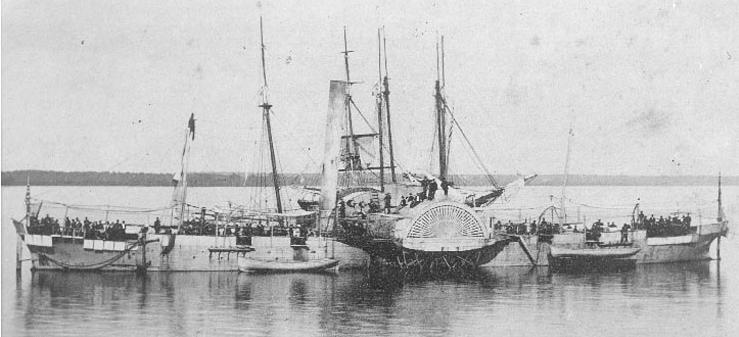
U.S.S. Miami in 1861
James Dolan (dates unknown). James Dolan was found in the 1890 Veterans Census for Joliett, Porter Township, Schuylkill County, Pennsylvania. He claimed service on the U.S. S. Miami, from 27 January 1862 to 10 February 1865. However, he could not be located in the U.S. Marine Corps Muster Rolls for those dates. More information is sought on him.
Theodore Minis Etting (1846-1927). Theodore Etting was the grandson of Fannie Gratz, the sister of Simon Gratz, the founder of Gratz, Pennsylvania. He was the second cousin of John C. Gratz, who died in the Civil War. According to an on-line biography provided by the University of Pennsylvania, Theodore enrolled at Penn in 1861 as a member of the Class of 1865, but did not finish. He left during the first term of sophomore year to volunteer for the Civil War, with an appointment as acting midshipman on 28 November 1862. After the war ended, Etting graduated from the United States Naval Academy in 1868. He rose to the level of lieutenant before resigning from the Navy with an honorable discharge in 1877. Two years later, in 1879, Etting earned an LL.B. from the University of Pennsylvania Law School, where he was awarded the Sharswood Prize for his subsequently published essay, “The Admiralty Jurisdiction in America.” A marine lawyer, he was elected to represent the eighth ward of Philadelphia as member of the Select Council in 1885. Etting married Jeannette Verplanck of Fishkill-on-Hudson, New York, who died in 1925. Theodore Minis Etting died in his Rittenhouse Square apartment in Philadelphia on November 14, 1927. Funeral services were held at the Church of St. Luke and the Epiphany, and he is buried in the Woodlands Cemetery, Philadelphia. Additional information on Theodore Etting is found in the Jewish Encyclopedia and “Officers of the U.S. Navy” but specific information on his Civil War service is being sought, such as campaigns or battles in which he participated.
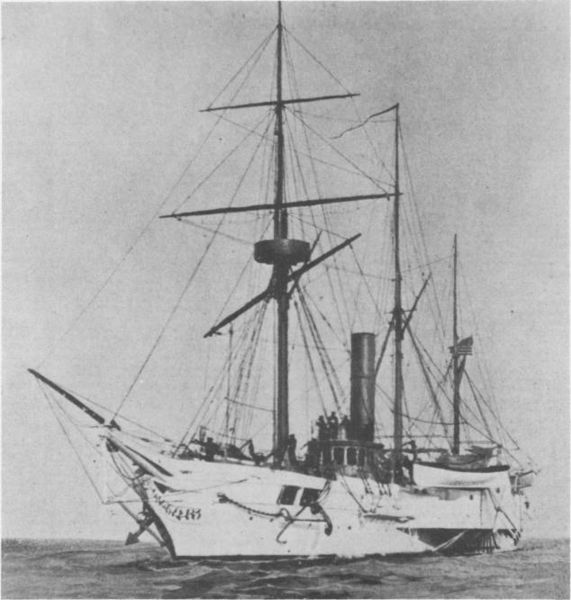
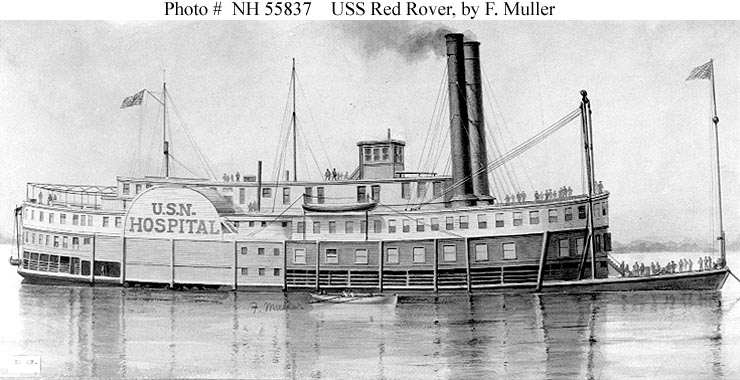
Peter L. Metz (1843- ). Civil War pension records available to the Civil War Research Project indicate that a Peter Metz served in the navy as a Landsman and Quartermaster during the Civil War and in the 98th Pennsylvania Infantry, Company K, as a Private. Recent research has confirmed that this is not the same Peter Metz who is buried in St. John (Hill) Cemetery in Berrysburg. Peter L. Metz served aboard the U.S.S. Michigan during the Civil War and also the U.S.S. Red Rover, a hospital ship of the navy. After his discharge, he lived in the Erie, Pennsylvania area and in 1907 a pension application indicates he was the proprietor of a shoe store. It is not known at this time whether this Peter L. Metz had any connection with the Lykens Valley area, so more information is sought on him.
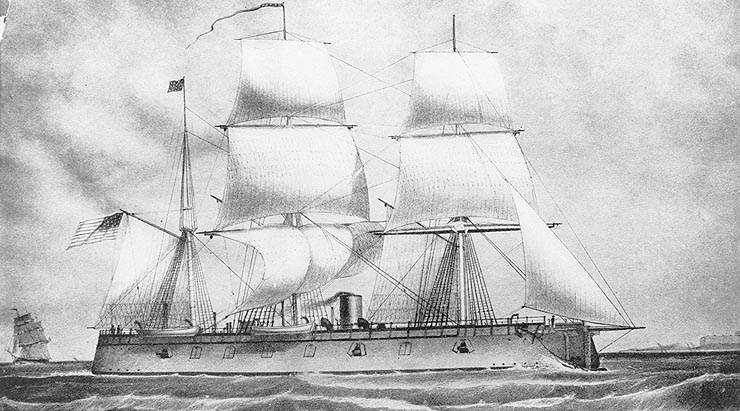
U.S.S. New Ironsides
Isaac Miller (1832-abt 1921). In the 1890 Veterans Census for Millersburg, Dauphin County, Pennsylvania, Isaac Miller reported service aboard the U.S.S. New Ironsides as a Master Steward. In 1870 he was living in Millersburg and employed as a laborer. In 1880, still living in Millersburg, he indicated he indicated he was a retired coal shipping agent. In 1900, he was a bank president in Millersburg, and his son Ross, age 26, living in his household, was working as a bank clerk. Isaac Miller’s name appears on the Millersburg Civil War Monument. The ship list for the U.S.S. New Ironsides has one Isaac Miller who was the Ship’s Carpenter. The Pension Index Card notes service in the navy as well as in the 138th Pennsylvania Infantry, Company A, and the possible death date is when his widow, Jemima, applied for a widow’s pension (which she did not receive). More information is sought.
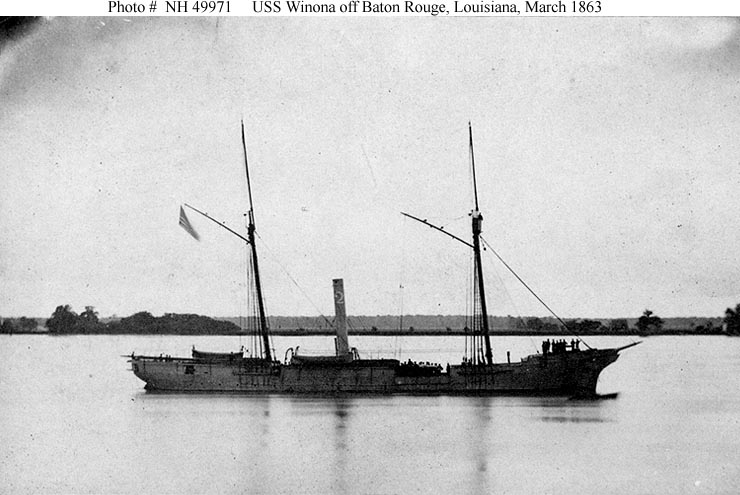
U.S.S. Winona
Thomas Norton (dates unknown). Thomas Norton’s name appears on the Millersburg Civil War Monument. His Civil War service has not been positively located, however, it is possible that he is the same Thomas Norton who served aboard the U.S.S. Winona and was living in Philadelphia in 1890. There are also records for a Thomas Norton who served in Pennsylvania regiments during the Civil War, notably the 116th Pennsylvania Infantry, Company G; 198th Pennsylvania Infantry, Company A; and the 5th Pennsylvania Infantry, Company A. More information is needed to determine which, if any, of the above service units is a match for the Thomas Norton whose name appears on the Millersburg Civil War Monument.
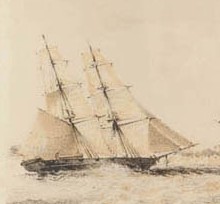
U.S. Brig Perry
Frederick N. Wise (1825-1901). Pension records available to the Civil War Research Project show that Frederick N. Wise served in the navy during the Mexican War, but served in the 208th Pennsylvania Infantry during the Civil War. There are also copies of about 30 pages of pension records and statements in the files. Wise served aboard the U.S.S. Perry between 1847 and 1851. He re-enlisted, then was listed as a deserter. At the time of the Civil War, he joined the 208th Pennsylvania Infantry at Snyder County on 30 August 1864. In 1860, Frederick lived in Jackson Township, Dauphin County, and was a cabinet maker. By 1870, he had moved to Berrysburg, Dauphin Co. and was still working as a cabinetmaker. In 1880 he appears in Lykens Borough as a carpenter and by 1900 he was serving as a Justice of the Peace in Lykens. He died on 4 July 1901 and is buried in the I.O.O.F. Cemetery in Lykens. His name appears on the Lykens G.A.R. Monument. Much more information is sought on Frederick N. Wise and a “sorting out” and interpretation of the available records is needed as well.
Dalles David Ditty (1844-1897). His name appears on the Millersburg Civil War Monument and in the 1890 Veterans Census, while living at Millersburg, he only indicated Civil War service in a volunteer Pennsylvania cavalry. However, other records show that he may have been a career military man serving for a time in the navy and stationed in 1880 at the U.S. Naval Academy at Annapolis. In 1870, he was listed in the Millersburg census with occupation as “soldier.” Not much is yet known about Dalles David Ditty so any information that can provided will be greatly appreciated.
Edward Lineham (1841- ). Found in Halifax Bicentennial Book cemetery list for St. Paul (Bowerman’s) Lutheran Church Cemetery, Enterline, Dauphin County, Pennsylvania, as a Civil War veteran. No other information was given. In searching Civil War records, an Edward Lineham was found who served in Company H, of the New York Marine Light Artillery Battery on 20 May 1862. It is not know if this is the same Edward Lineham who is mentioned in the Halifax Bicentennial Book. Much more information is needed.
Some of the information for this post was found in A Comprehensive History of the Town of Gratz Pennslvania and on Wikipedia. Pictures of ships are from Wikipedia or a naval history site on the web. and according to information given on those sites, the pictures are in the public domain either because their copyright has expired or because they were taken or produced by an employee of the government while on official duty.
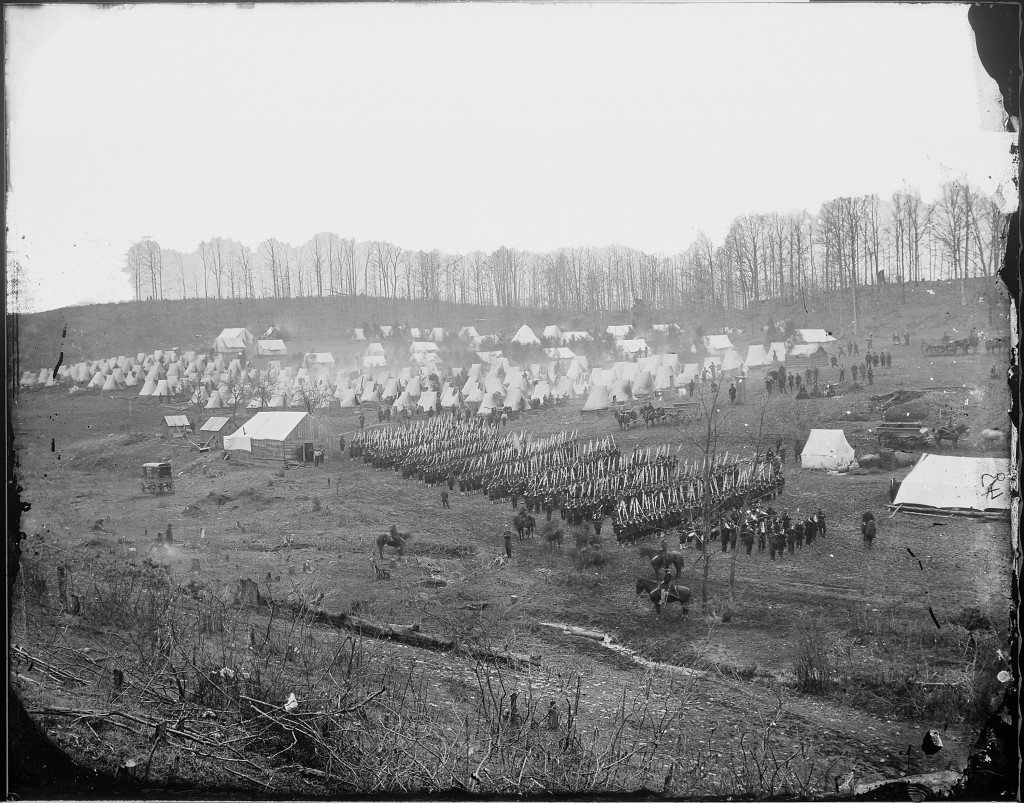 By clicking on both pictures, the resolution becomes more obvious. It is important to recognize that the technology available in 1911 to reproduce photographs in print was not as good as the technology available today – and even more important to recognize that the picture above from The Photographic History of the Civil War is from a digital version (PDF) of a printed version of an original photograph. If the original negatives are available, it is always to refer to them and prints from them. Absent the original negatives, high resolution digital copies of the original prints (high quality prints made from the original negatives) are the next best option. However, many of the “thousands” of images in The Photographic History of the Civil War will be next to impossible to obtain, so use of the digital versions (PDF) of the printed copies will be the only recourse for genealogical researchers.
By clicking on both pictures, the resolution becomes more obvious. It is important to recognize that the technology available in 1911 to reproduce photographs in print was not as good as the technology available today – and even more important to recognize that the picture above from The Photographic History of the Civil War is from a digital version (PDF) of a printed version of an original photograph. If the original negatives are available, it is always to refer to them and prints from them. Absent the original negatives, high resolution digital copies of the original prints (high quality prints made from the original negatives) are the next best option. However, many of the “thousands” of images in The Photographic History of the Civil War will be next to impossible to obtain, so use of the digital versions (PDF) of the printed copies will be the only recourse for genealogical researchers. ;
;
